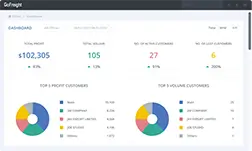What are Demurrage Charges?
A demurrage charge is a fee initiated by the port to freight forwarders or freight agents for using its containers beyond the specified laytime within the terminal area. As global trade increases, ports charge these fees to incentivize fast and efficient container turnaround times. Note that demurrage charges are different from detention charges, which refers to fees incurred from extended container time used outside of the port beyond the stipulated free time.
What are the Common Causes for Demurrage Charges?
Demurrage charges occur for a variety of reasons. For instance, the importer/exporter may lack the finances to clear customs in time or suffer from port congestion. But more often than not, these charges occur because freight forwarders lack a streamlined workflow that allows them to easily track shipments and plan for arrivals. As a result, consignees are often not aware of their arrival shipment and do not have the documents and transportation necessary to clear customs and the port in time.
What are the Penalties for Demurrage Charges?
Demurrage charges vary depending on the country, the number of containers remaining at the port, and the excess stipulated laytime. Fees range from $70 to $100 per day that can quickly increase if the delays continue. If not carefully controlled, the fees could soon eat away profit margins and force importers/exporters to abandon cargo, thereby damaging the freight forwarder’s reputation and financially damaging the company as a whole.
How can I Minimize Demurrage Charges?
Thankfully, GoFreight tracking provides a clean workflow that can help minimize at least 50% of demurrage charges by promoting shipment visibility. A clean and streamlined workflow allows freight forwarders to easily monitor and proactively plan for freight arrivals. Common characteristics of a streamlined workflow include its ease of use, its scalability, and its efficiency in completing tasks. A simple way to test the “cleanliness” of one’s current workflow is to explain the process to a coworker. If one is finding a hard time explaining how the process works, chances are the current workflow is too cumbersome and needs a revamp. Most of the time, freight forwarders have complicated workflows because the transportation management system they employ is not user-centric and thus forces users to adapt to system inefficiencies.
Therefore, one way to have a clean workflow instantly is investing in a complete freight management software with a user-friendly interface that allows you to effortlessly track shipment changes, set reminders, prepare documents electronically, and communicate with clients through automation. An example of this kind of software is GoFreight, which is built from the ground up with a user-centric friendly UI by ex-freight forwarders who know the type of workflow demanded by freight forwarders. Click here to learn more about how we can be your digital partner for the next decade!






